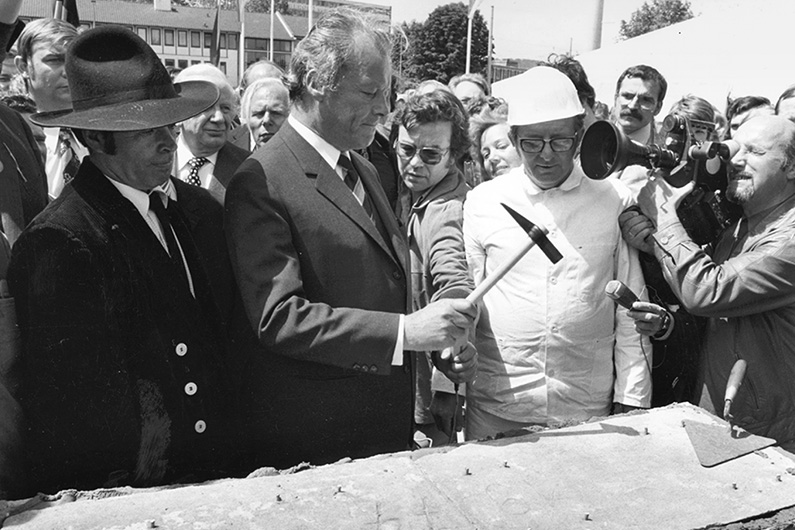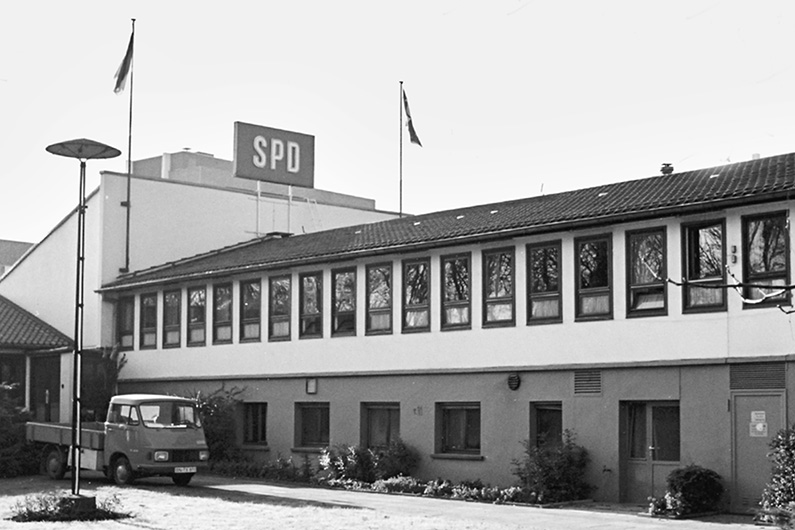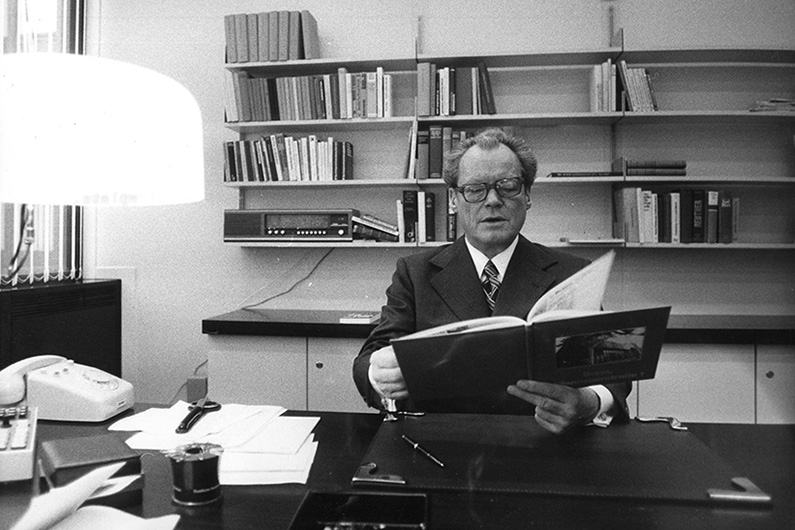This is precisely what happened when, in 1974, the “barracks,” which had been expanded a number of times, were removed to make way for a new building. After being dismantled piece by piece, the old buildings were reassembled on the site of a workers welfare association holiday home near Travemünde, a family recreation holiday site in Odenthal, and a children's and youth home in Hützel/Soltau.
In the meantime, at the “Diplomatenrennbahn” between Bonn and Bad Godesberg, an earth-toned, low-rise party headquarters was being built whose design had some features in common with that of the Chancellery, which was likewise under construction at the time. The building’s architects, Fritz Novotny and Arthur Mähner, described their aim for the edifice in a 1975 brochure: “We wanted to do justice to the down-to-earth orientation of the SPD, which meant eschewing external appeal so as to enable us to preserve the ambience of the ‘barracks’ and incorporate it into the new building.”
This concept was embodied by so called “communicative areas” and the building’s floor plan, which was meant to embody the SPD’s attitude toward governance: the ground floor of the new building was set aside for the organisation’s executive arm, while the second floor housed the elements of the party that dealt with organisational matters, youth work and international relations.
The building was named after Erich Ollenhauer, who succeeded Kurt Schumacher as party chairman, a position he held from 1952 to 1963. One of his successors, Gerhard Schröder, symbolically closed the headquarters’ doors in July 1999. The poster that he left for the citizens of Bonn was inscribed with a quote from German author Theodor Fontane and a gingerbread heart. The quote went as follows: “Words of farewell should be as brief as declarations of love.” The gingerbread heart said, “See ya, Bonn.” Just like Schröder, many people undoubtedly felt.
Schröder had enjoyed enormous popularity ever since he said “This is the end of an era” at the post-election victory celebration at the party’s Bonn headquarters on 27 September 1998. The era Schröder was referring to was the tenure of Chancellor Helmut Kohl, whose supporters, at Konrad- Adenauer-Haus only a few hundred metres away, were trying to deal with the shock of losing the election. But shortly after this ebullient event, the Bonn era of the SPD also came to an end, when, in July 1999, the party’s executive committee moved into the, in 1996 opened Willy-Brandt-Haus in Berlin. The sign on the building emblazoned with the party’s large red logo was donated to the permanent collection of the Haus der Geschichte.


